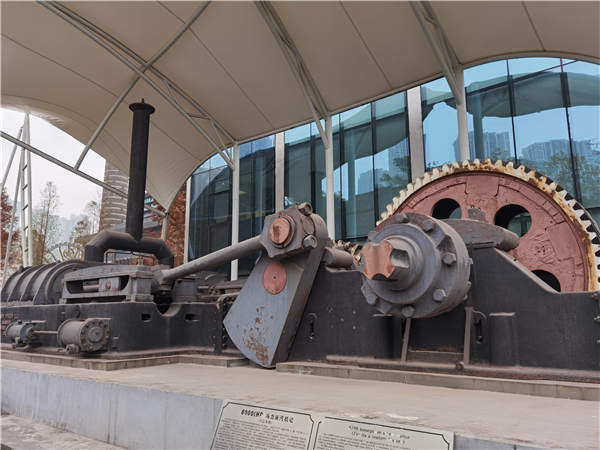

Guan proudly introduces a steam engine Zhang Zhidong bought from the United Kingdom in 1906 as the most important exhibit.
From its early days in Wuhan and through the wartime years-some of its components were even sunk into the Yangtze by Japanese bombs and salvaged after the war-it continued working until 1985, when new machines replaced it.
It can still function today, Guan says.
After New China's 1949 founding, the Chongqing Iron and Steel Company continued to witness many milestones in China's industrial development. For example, the first Chinese rail was made there in 1950.
On May 18, International Museum Day, a Chongqing Industrial Museum exhibition was listed among the country's top 10 exhibitions of 2020 by the National Cultural Heritage Administration.
The large-scale steel-manufacturing machines may offer subject matter for social media posts. But it's a nostalgic place for Chongqing residents, especially the elderly.
In addition to wartime photos and relics, an exhibition hall that's also a former steel plant ushers visitors across a century through displays of various old items. It shows how Chongqing's modern industry started from nothing and gradually transformed the city into an economic hub in western China.
Modern industries mushroomed in the city after the opening-up of the 1890s, starting with a match factory. Such sectors as automobile and textile manufacturing boomed, as have high-tech industries in recent years.
An old TV set with only eight buttons reminds us that everything familiar in our everyday lives may end up in museums much sooner than we expect.
But a juxtaposition of "Chongqing products" hung from the exhibition hall's ceiling-mechanical clocks, cameras and ancient handicrafts like pottery-points to another thought: No matter how time changes, such items' legacies last and encourage people to continuously create new things.
Another relocation came in 2011, when Chongqing Iron and Steel was moved out of downtown to better protect the environment.